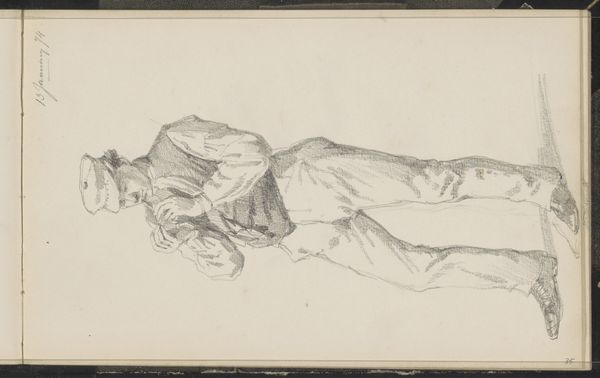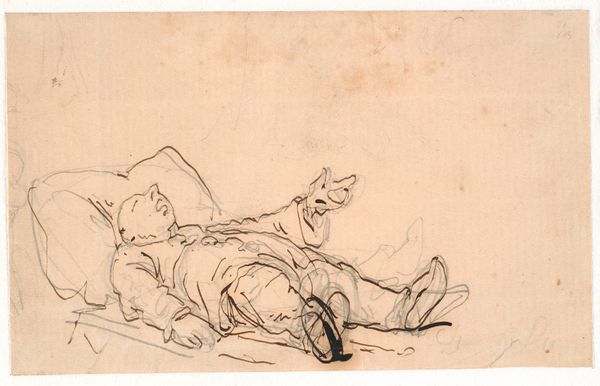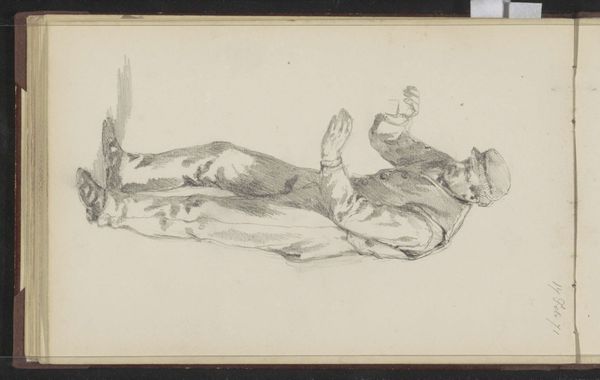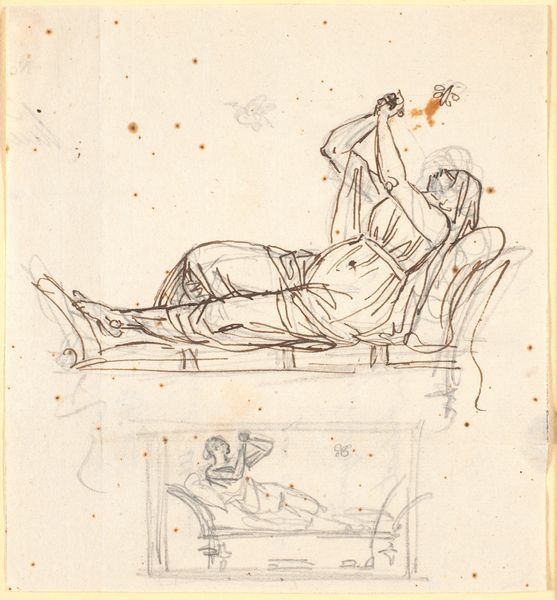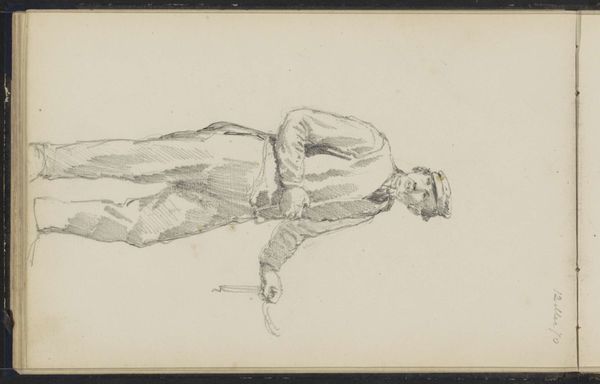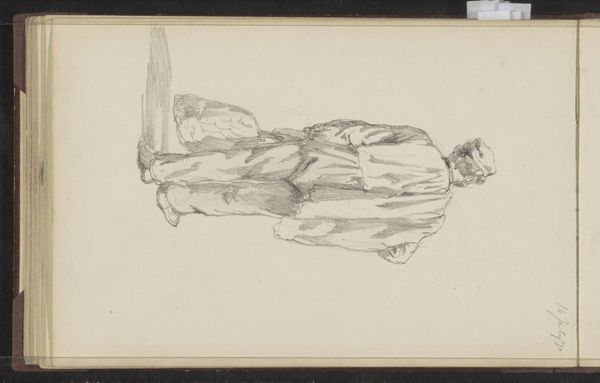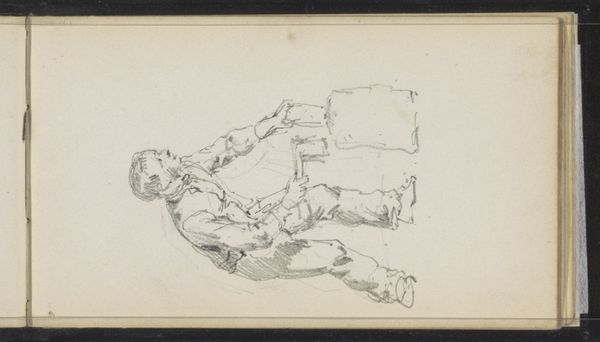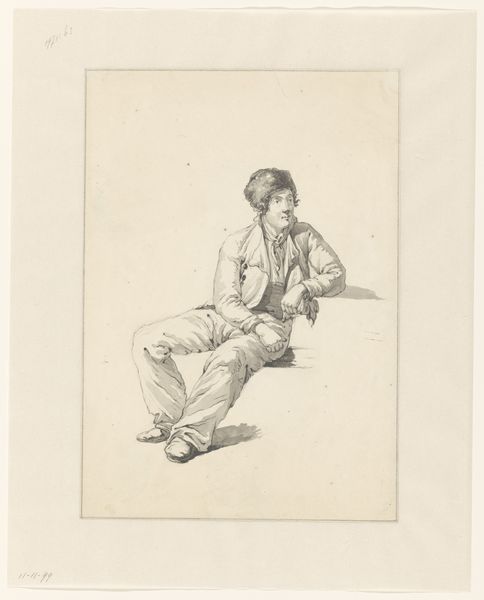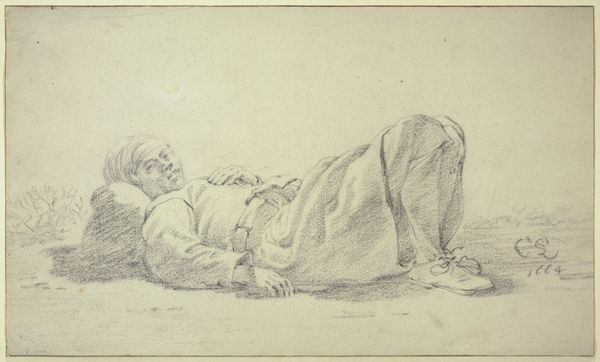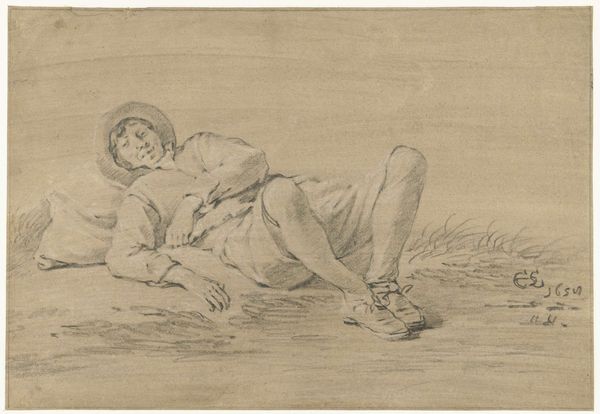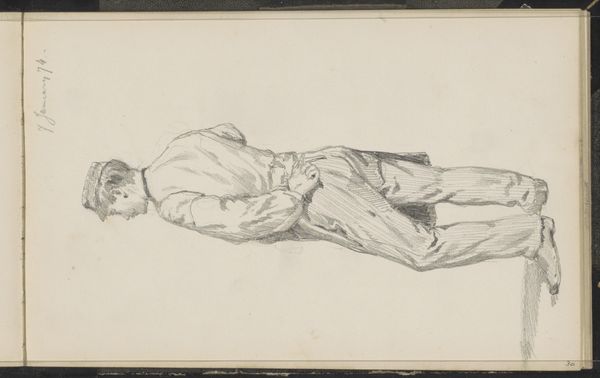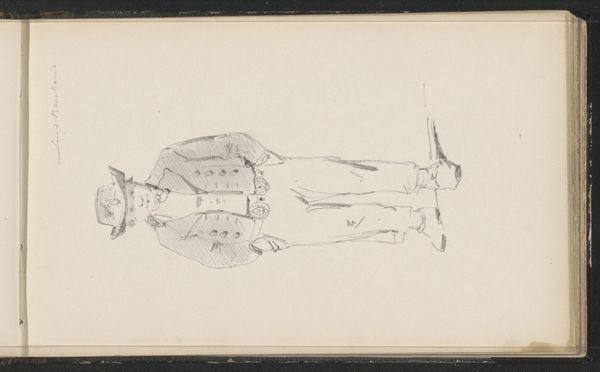
drawing, pencil
#
portrait
#
drawing
#
figuration
#
pencil
#
realism
Dimensions: image (irregular): 8.89 × 15.88 cm (3 1/2 × 6 1/4 in.) sheet: 16.19 × 22.23 cm (6 3/8 × 8 3/4 in.)
Copyright: National Gallery of Art: CC0 1.0
Curator: This delicate drawing is titled "Relaxing Soldier" and is attributed to David Claypoole Johnston, likely created around the 1860s. Editor: There's something so intimate about this sketch. He looks utterly exhausted, yet oddly serene. The composition is deceptively simple. Curator: Johnston was a caricaturist, printmaker, and illustrator. It’s compelling to consider this work within the context of the Civil War. One might consider his sources for sketches and the consumption of printed portraits of this kind by the Northern population during the war. The visible pencil lines and unfinished details, for me, point to a study of human form or of character that intersects with the growing availability of photographic portraits during that time. Editor: I see what you mean, in thinking of Johnston as someone usually making caricatures – and even seeing realism itself as something consumed by the public as a desire to come closer to an objective truth in representation – there is a tension in what is perceived as truth or constructed likeness. This piece invites a dialogue about how war is portrayed. Are we meant to empathize with the weary soldier, or is this image promoting a particular narrative about the conflict's impact? And what material conditions were allowing the artist to sit so leisurely and produce this work while battles unfolded? Curator: The fact that it’s a pencil drawing also affects my perception. I wonder about its creation. Was it drawn from life or from a photograph? Pencil drawings can have a raw, immediate feel, but they also rely on techniques of shading and layering— labor of craft. It makes me consider the cultural value and status assigned to sketching versus more "finished" forms of artistic representation in the mid-19th century. This work shows an attention to material production that would elevate drawing. Editor: Absolutely, the medium affects everything. Johnston probably wasn't embedded with the troops. The relatively clean state of his subject speaks volumes, as it offers clues about this sketch's public perception versus reality for actual combatants. And you’re right, pencil work does bring attention to the skill involved in bringing something forth and also how far realism has shifted. Curator: Well, it provides much to reflect on about artistry, historical context, and the creation of images in times of conflict. Editor: It certainly prompts questions about how we receive and interpret images of war. Even a relaxing soldier can have so much to tell us.
Comments
No comments
Be the first to comment and join the conversation on the ultimate creative platform.
